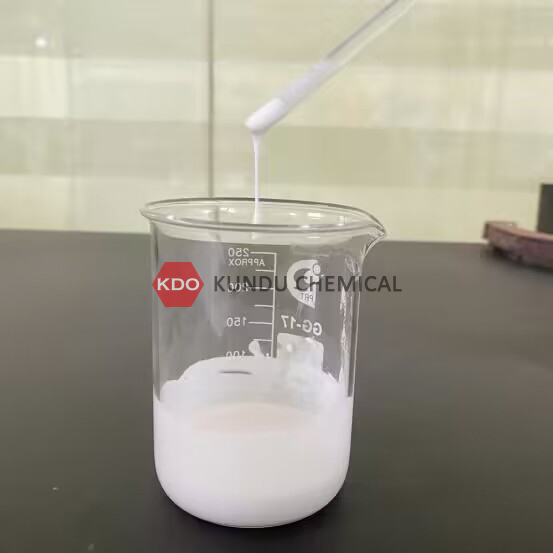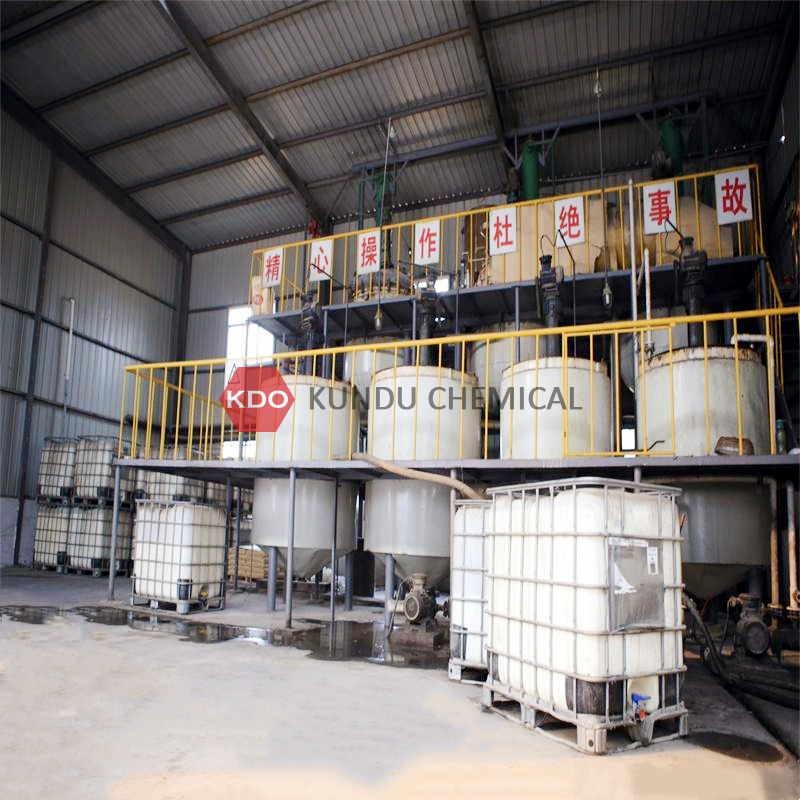- Time:2023/6/19Posted:SHANDONG KUNDU CHEMICAL CO.,LTD.
Among the construction chemical admixtures market, there are so many different types of redispersible polymer powder. It is difficult to distinguish between quality and purity. As a result, if the customer does not have his own professional technicians or testing equipment, he can only take risks by himself. At present, there are some so-called detection methods circulating on the Internet, such as: observing the turbidity of the solution and the state of film formation. These methods are only superficial cognition, and cannot provide scientific methodology support for the customer to finally determine whether the product is suitable for him or not. Therefore, in this article, we will systematically popularize some basic concepts of redispersible polymer powder RDP from the aspects of the raw material composition, characteristics, and purpose of use, so that customers can know whether it’s good or bad by themselves.

First of all, a basic concept is to understand the real redispersible polymer powder production process. (redispersible polymer powder is made of synthetic resin emulsion modified by adding other substances and spray-dried. When soluble in water, it can dispersed into emulsion again.
Redispersible polymer powder is usually in white flowing powder, but there are a few yellowish colors.) Redispersible polymer powder should include: polymer resin, additives, protective colloid, anti-caking agent.
1. Polymer resin is located in the core part of the latex powder particles and is also the main component of the redispersible polymer powder, such as polyvinyl acetate/vinyl resin, etc. The quality of vinyl acetate ethylene emulsion produced by different manufacturers and different processes will directly affect the quality of the redispersible polymer powder. In order to ensure the stability of product quality, normally KDO use only one brand of VAE emulsion to produce redispersible latex powder continuously and stably. Like in 2015, due to management reasons, a well-known domestic manufacturer of redispersible polymer powder,used to replace lower cost of vinyl acetate ethylene emulsion to produce redispersible polymer powder, it caused irreparable damage. What's more, some unscrupulous merchants here will use white latex instead of powder spraying.

2. Additives (internal) act together with the emulsion to modify the emulsion, for example, a plasticizer that reduces the film-forming temperature of the emulsion, (usually vinyl acetate/ethylene copolymer emulsion does not need to add a plasticizer), not every type of redispersible polymer powder has additives. Many small manufacturers only has a film-forming temperature index and cannot be called the glass transition temperature, which is also an important parameter for the quality of the redispersible polymer powder.
3. Protective colloid. A layer of hydrophilic material wrapped on the surface of the redispersible polymer powder particles, most of the protective body of the redispersible polymer powder is polyvinyl alcohol. The polyvinyl alcohol here is to participate in the spray drying process, rather than simply mixing. Here is another common problem in the market. Many small workshops that claim to produce redispersible polymer powder only do a physical mixing process. Technically , this product cannot be called redispersible polymer powder.
4. Additives (external) In order to further expand the performance of the redispersible polymer powder, additional materials are added, such as adding high-efficiency water reducers to certain flow-aiding redispersible polymer powder. Like internal additives, not every kind of redispersible polymer powder contain this additive.
5. Anti-caking agent. Fine mineral fillers, mainly used to prevent redispersible polymer powder RDP from caking during storage and transportation and to facilitate the flow of RDP (dumped out of paper bags or tank trucks). This filler is also a part that will greatly affect the actual production cost and efficacy of redispersible polymer powder. Many low-priced rubber powders on the market increase the proportion of fillers to reduce costs. Simply put, it is the index of ash content that is usually called. Different fillers added by different manufacturers will also affect the mixing effect of redispersible polymer powder and cement. Because the bonding of inorganic adhesives to materials is achieved through the principle of mechanical embedding.

Next time we will talk about the RDP production process.





